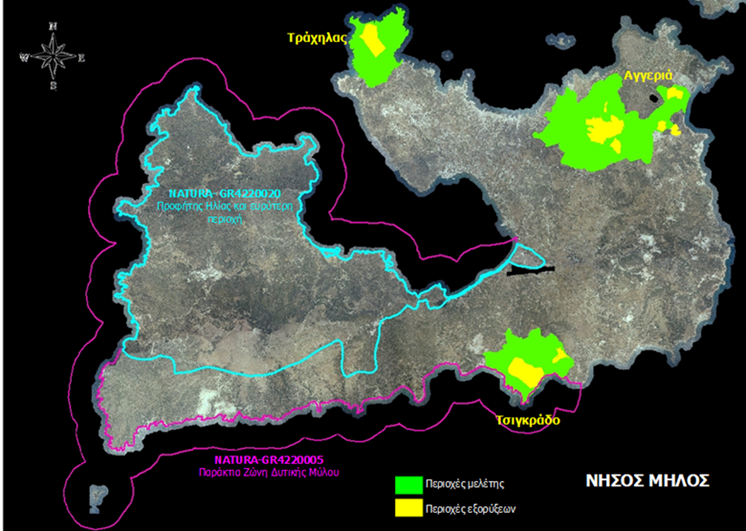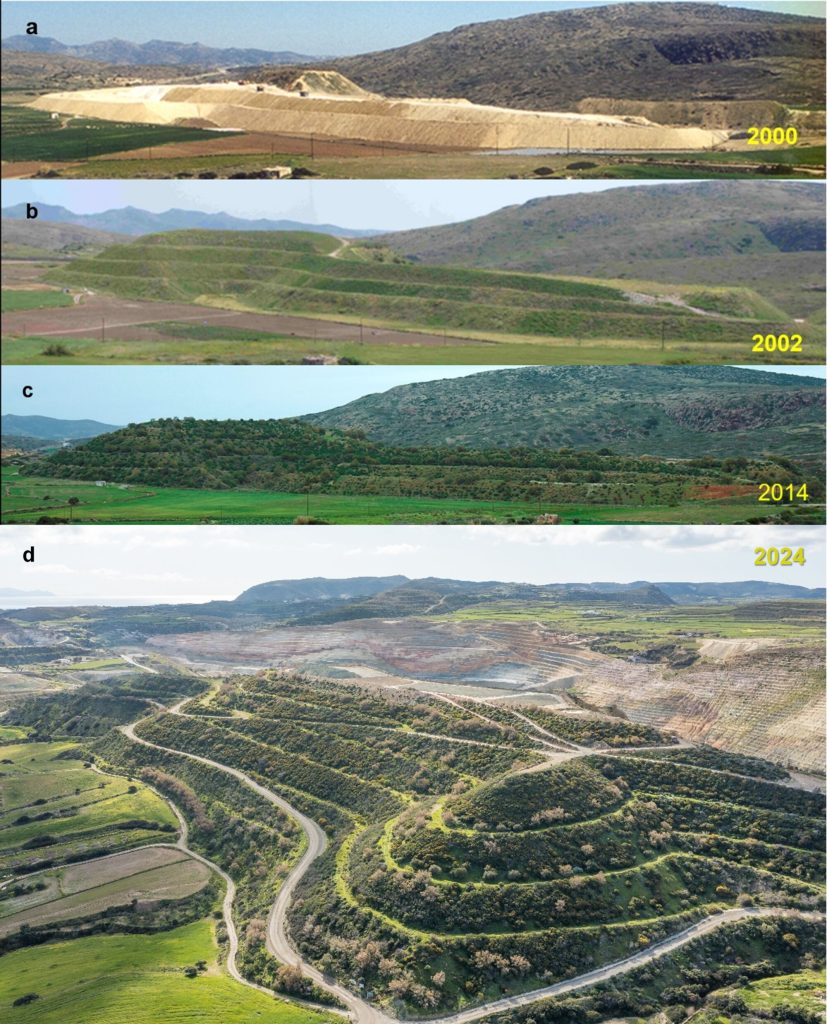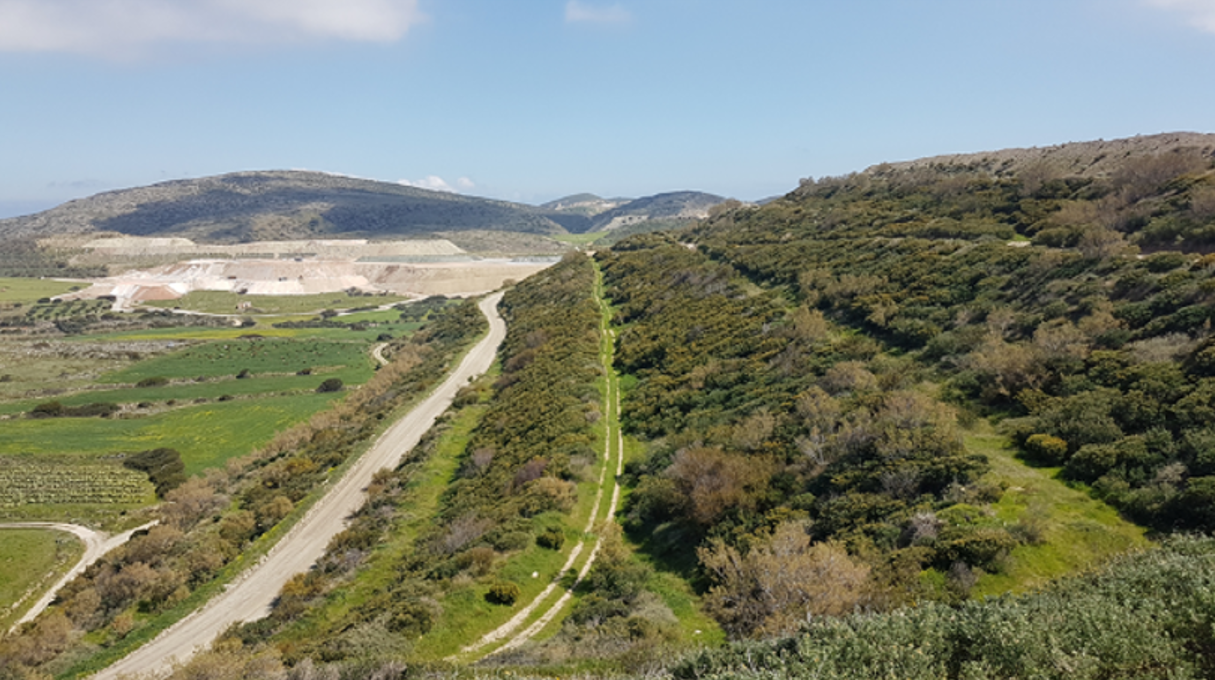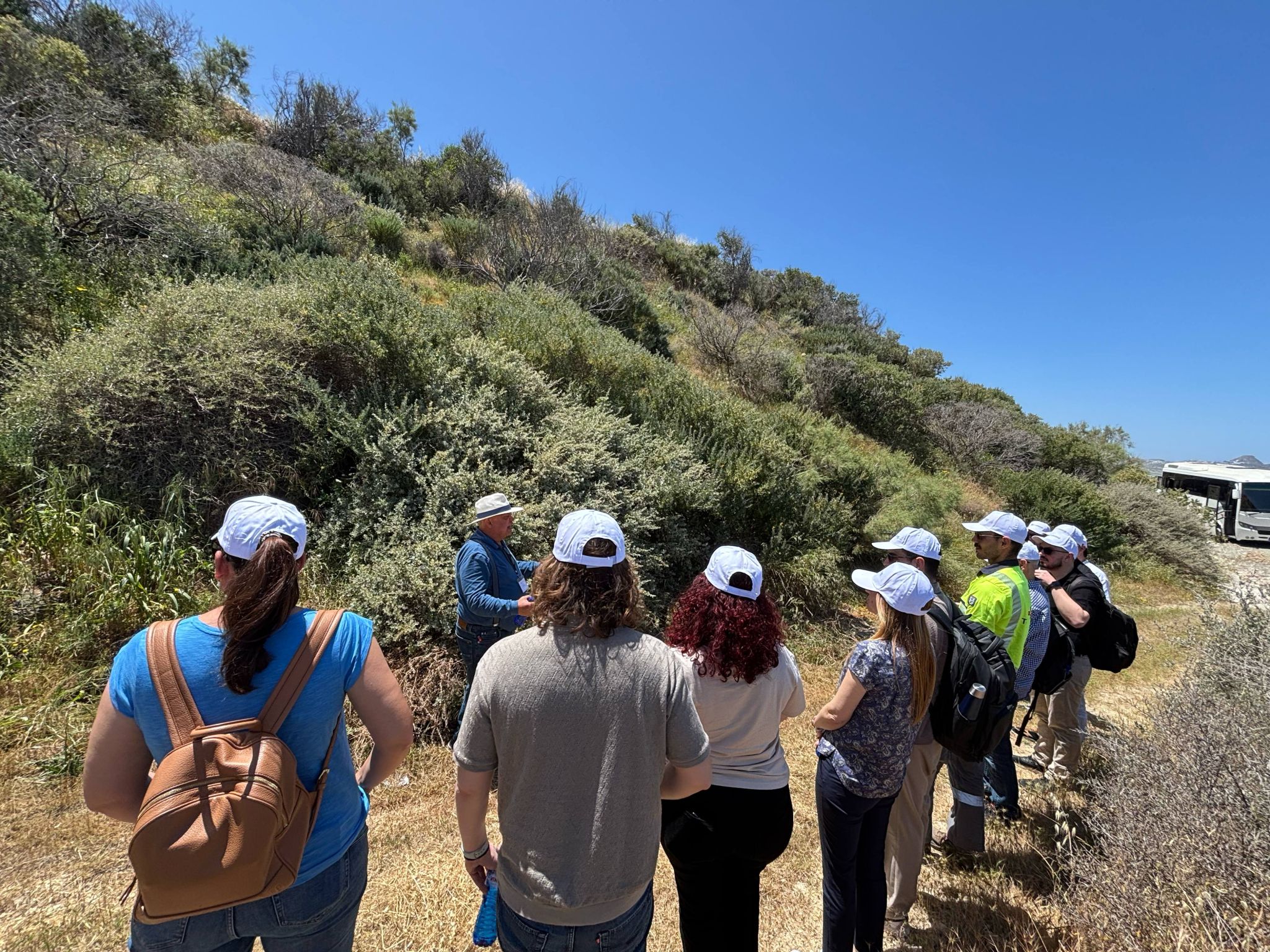Ecosystem and Biodiversity Restoration
Building Circular Regions through Smart Resource Flows
As part of RURBANIVE’s Ecosystem and Biodiversity Restoration domain, RUE#2 addresses one of the Mediterranean’s most pressing environmental challenges: the rehabilitation of degraded soils and exhausted quarry landscapes. On Milos Island, where extensive mining activity has left visible scars on the terrain, biodiversity loss and soil erosion threaten both the environment and local well-being. This RUE demonstrates how scientific innovation and participatory design can converge to bring life back to disturbed ecosystems. By combining microbiome-based technologies, digital mapping, and iterative co-creation within the Rural-Urban Co-Creation Lab (RUCL), RUE#2 transforms restoration into a process of learning, adaptation, and regeneration.
From Extraction to Regeneration
RUE#2 reimagines post-mining territories as multifunctional spaces where natural and agricultural systems coexist. Led by the Agricultural University of Athens (AUA) and IMERYS, the initiative applies Mediterranean biome-adapted plants and crops capable of thriving in dry, nutrient-poor soils. The goal is not only to restore vegetation but to design a resilient landscape that supports ecological balance and sustainable use. The approach integrates microbiome-based restoration techniques with digital monitoring tools and GIS mapping to document soil and vegetation dynamics, enabling data-driven evaluation and long-term maintenance.
The RUE’s plan includes three interconnected actions: (1) restoration of quarry areas using Mediterranean plant species and hydroseeding methods; (2) integration of compatible crops to link restoration with agricultural productivity; and (3) the creation of a Botanical Path that serves as an educational and recreational feature. Through these combined actions, RUE#2 showcases how degraded industrial areas can evolve into sustainable ecosystems that support both biodiversity and local identity.
Participatory Design and Engagement
The development of RUE#2 follows RURBANIVE’s co-creation framework, ensuring that project activities are informed by local knowledge and iterative feedback. Workshops facilitated by AUA and IMERYS have gathered stakeholder input on the design of restoration measures, as illustrated in Deliverable D3.1 (Figures 10–11). These sessions provided valuable insights into resource planning, selection of species, and the layout of the Botanical Path. Local actors have participated in these discussions, strengthening the alignment of restoration efforts with the territorial context of Milos.
Expected Outcomes and Impact
By the end of its implementation, RUE#2 will deliver:
- Rehabilitation of quarry areas through adaptive planting and microbiome-supported soil restoration.
- A biodiversity database documenting native plant species.
- A public Botanical Path as a permanent educational and outreach feature.
- Practical restoration guidelines for replication in other arid and semi-arid regions of Europe.
- Enhanced awareness of the ecological and cultural value of restored landscapes.
RUE#2 thus moves beyond physical restoration. It promotes environmental stewardship, encourages the use of science-based methods for ecosystem recovery, and lays the foundation for new nature-based economies in regions affected by extractive industries.
Integration within RURBANIVE
RUE#2 will be included in the RURBANIVE Community Store as a modular toolkit for ecological restoration. It will provide methodological templates, field data, and visual materials that can be adapted by other Rural-Urban Co-Creation Labs. Through its iterative design and documentation, RUE#2 contributes to RURBANIVE’s broader mission of developing replicable, sustainable models for ecosystem restoration and rural-urban cooperation.








